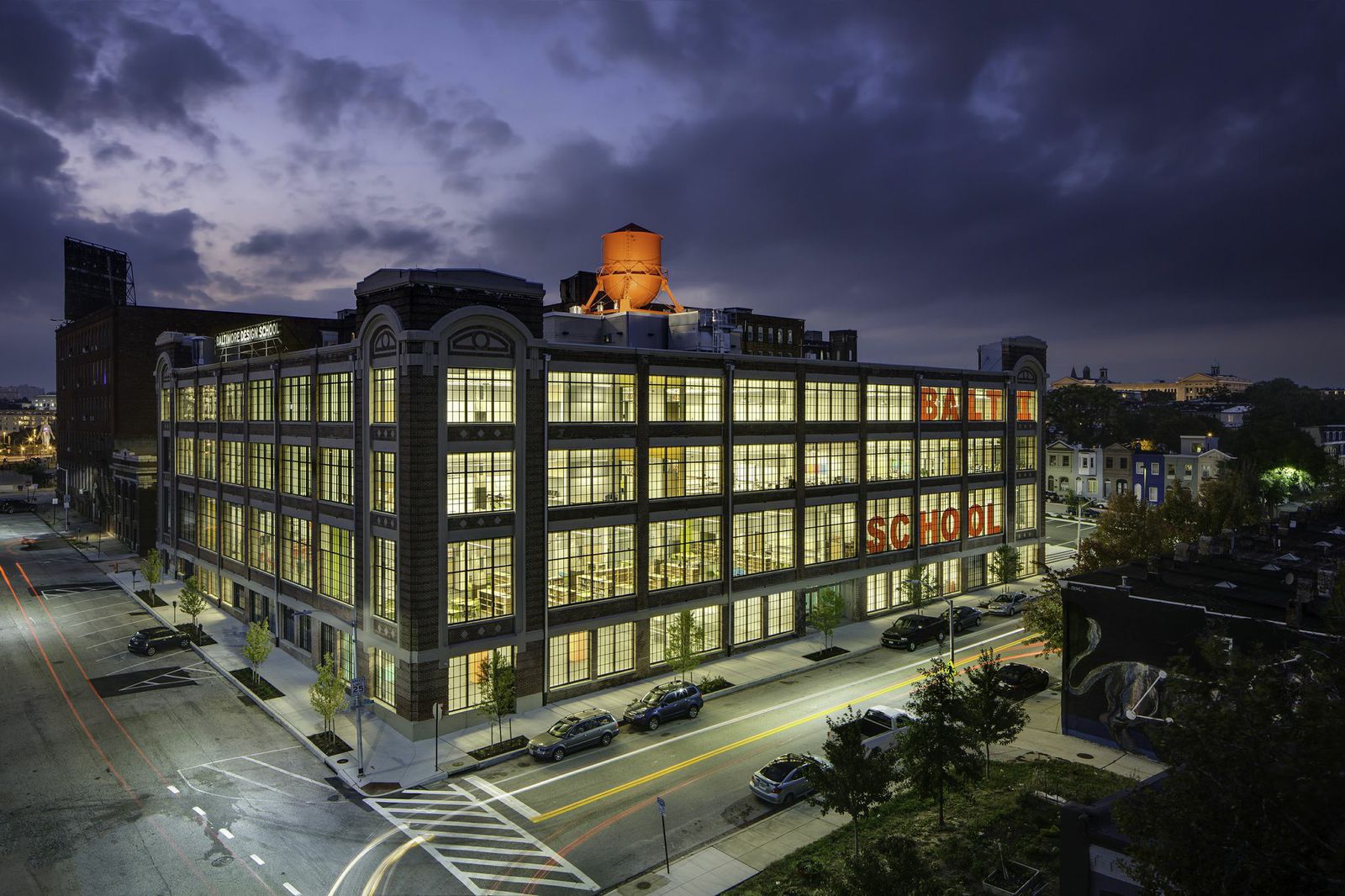The American Institute of Architects (AIA) Committee on Architecture for Education (CAE) has selected 11 educational and cultural facilities for this year’s CAE Educational Facility Design Awards.
The CAE Design Excellence Award honors educational facilities that the jury believes should serve as an example of a superb place in which to learn, furthering the client's mission, goals and educational program while demonstrating excellence in architectural design.
These projects exemplify innovation through the client's educational goals through responsive and responsible programming, planning and design. Function and surrounding regional and community context are valued as part of the planning and design process as well as sustainability.
The 2014 CAE Educational Facility Design Awards jury includes: John R. Dale, FAIA (Chair), Harley Ellis Devereaux; Claire Gallagher, Assoc. AIA, Georgian Court University, School of Education; Fred Dust, IDEO; Dutch MacDonald, AIA, MAYA Design and Marsha Maytum, FAIA, Leddy Maytum Stacy Architects.
Baltimore Design School; Baltimore
Ziger/Snead Architects
Buckingham County Primary & Elementary Schools at the Carter G. Woodson Education Complex; Dillwyn, VA
VMDO Architects, P.C.
Drexel University College of Media Arts and Design (CoMAD) URBN Center; Philadelphia
MSR (Meyer, Scherer & Rockcastle, Ltd.)
University of Chicago Child Development Center – Stony Island; Chicago
Wheeler Kearns Architects
Wilkes Elementary School; Bainbridge Island, WA
Mahlum
Central Arizona College, Maricopa Campus; Maricopa, AZ
SmithGroupJJR
Coastline Community College, Newport Beach Campus; Newport Beach, CA
LPA, INC
James B. Hunt Jr. Library at North Carolina State University Raleigh, NC
Architect: Clark Nexsen
Associated Firm: Snohetta
Nathan Hale High School Modernization; Seattle
Mahlum
PAVE Academy Charter School; Brooklyn, NY
Mitchell | Giurgola Architects, LLP
Raisbeck Aviation High School; Tukwila, WA
Bassetti Architects
Related Stories
| Jan 19, 2011
Extended stay hotel aims to provide comfort of home
Housing development company Campus Apartments broke ground on a new extended stay hotel that will serve the medical and academic facilities in Philadelphia’s University City, including the University of Pennsylvania and the Children’s Hospital of Philadelphia. The 11,000-sf hotel will operate under Hilton’s Homewood Suites brand, with 136 suites with full kitchens and dining and work areas. A part of the city’s EnergyWorks loan program, the project aims for LEED with a green roof, low-flow fixtures, and onsite stormwater management. Local firms Alesker & Dundon Architects and GC L.F. Driscoll Co. complete the Building Team.
| Jan 19, 2011
New Fort Hood hospital will replace aging medical center
The Army Corps of Engineers selected London-based Balfour Beatty and St. Louis-based McCarthy to provide design-build services for the Fort Hood Replacement Hospital in Texas, a $503 million, 944,000-sf complex partially funded by the American Recovery and Reinvestment Act. The firm plans to use BIM for the project, which will include outpatient clinics, an ambulance garage, a central utility plant, and three parking structures. Texas firms HKS Architects and Wingler & Sharp will participate as design partners. The project seeks LEED Gold.
| Jan 19, 2011
Museum design integrates Greek history and architecture
Construction is under way in Chicago on the National Hellenic Museum, the nation’s first museum devoted to Greek history and culture. RTKL designed the 40,000-sf limestone and glass building to include such historic references as the covered walkway of classical architecture and the natural wood accents of Byzantine monasteries. The museum will include a research library and oral history center, plus a 3,600-sf rooftop terrace featuring three gardens. The project seeks LEED Silver.
| Jan 19, 2011
Architecture Billings Index jumped more than 2 points in December
On the heels of its highest mark since 2007, the Architecture Billings Index jumped more than two points in December. The American Institute of Architects reported the December ABI score was 54.2, up from a reading of 52.0 the previous month.
| Jan 19, 2011
Large-Scale Concrete Reconstruction Solid Thinking
Driven by both current economic conditions and sustainable building trends, Building Teams are looking more and more to retrofits and reconstruction as the most viable alternative to new construction. In that context, large-scale concrete restoration projects are playing an important role within this growing specialty.
| Jan 10, 2011
Architect Jean Nouvel designs an island near Paris
Abandoned by carmaker Renault almost 20 years ago, Seguin Island in Boulogne-Billancourt, France, is being renewed by architect Jean Nouvel. Plans for the 300,000-square-meter project includes a mix of culture, commerce, urban parks, and gardens, which officials hope will attract both Parisians and tourists.
| Jan 10, 2011
Michael J. Alter, president of The Alter Group: ‘There’s a significant pent-up demand for projects’
Michael J. Alter, president of The Alter Group, a national corporate real estate development firm headquartered in Skokie, Ill., on the growth of urban centers, project financing, and what clients are saying about sustainability.
| Jan 7, 2011
BIM on Target
By using BIM for the design of its new San Clemente, Calif., store, big-box retailer Target has been able to model the entire structural steel package, including joists, in 3D, chopping the timeline for shop drawings from as much as 10 weeks down to an ‘unheard of’ three-and-a-half weeks.
| Jan 7, 2011
How Building Teams Choose Roofing Systems
A roofing survey emailed to a representative sample of BD+C’s subscriber list revealed such key findings as: Respondents named metal (56%) and EPDM (50%) as the roofing systems they (or their firms) employed most in projects. Also, new construction and retrofits were fairly evenly split among respondents’ roofing-related projects over the last couple of years.





























































































